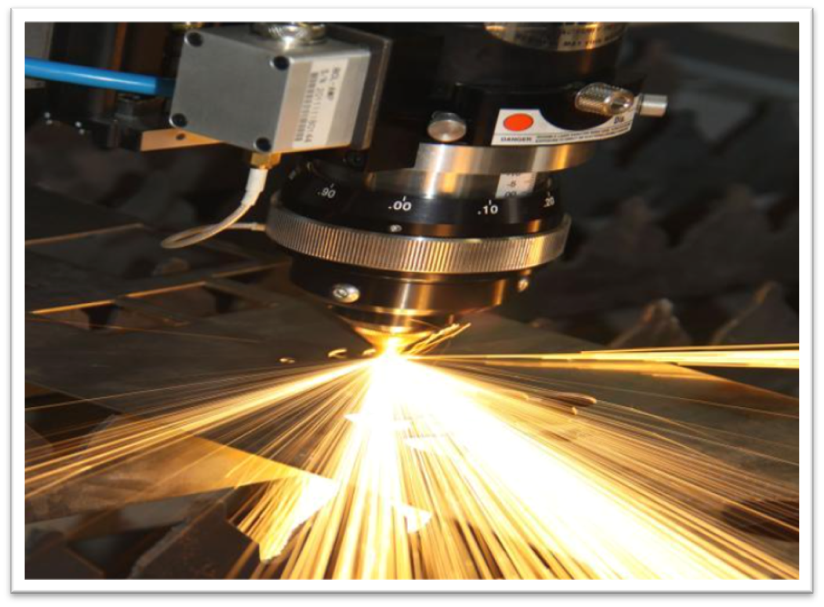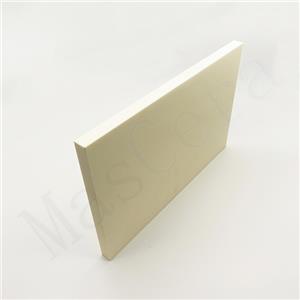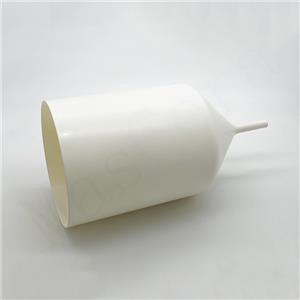Ceramic Substrate Series - Introduction to Laser Marking Process
Ceramic substrates play a crucial role in modern industries and are widely utilized in fields such as electronics, optoelectronics, telecommunications, aerospace, and more.
1、Introduction to Ceramic Substrates

Ceramic substrates possess excellent insulation properties and high reliability. They exhibit advantages such as low dielectric constant, good high-frequency characteristics, low coefficient of thermal expansion, and high thermal conductivity. However, ceramic substrates are relatively brittle, resulting in small substrate areas and higher costs.
The main materials used for ceramic substrates include alumina (Al2O3), aluminum nitride (AlN), and silicon nitride (Si3N4).
Among them,alumina (Al2O3) ceramic substrates are widely applied in integrated circuits and optoelectronic devices due to their outstanding insulation and high-temperature resistance.
Aluminum nitride (AlN) ceramic substrates boast high thermal conductivity, low dielectric constant, low dielectric loss, and a coefficient of thermal expansion compatible with silicon. As technology matures, the cost of AlN substrates gradually decreases, leading to a widening application range.
Silicon nitride (Si3N4) ceramic substrates feature excellent mechanical strength, thermal shock resistance, and chemical stability. They are commonly used in high-temperature and high-stress environments such as gas turbines and automotive engines. Additionally, they exhibit good electrical insulation properties, capable of withstanding high voltages, making them widely applicable in high-power electronic applications. Si3N4 ceramic substrates also have low thermal expansion, rendering them compatible with various materials, including semiconductors and metals.
2、Traditional Mechanical Machining vs. Laser Processing
The manufacturing process of ceramic substrates mainly involves raw material selection, shaping, sintering, and post-sintering processing.
(1)Mechanical Machining
Mechanical machining of ceramics refers to the process of using mechanical equipment and tools for processing ceramic materials. It includes cutting, grinding, drilling, etc. The advantages are simple processes, high processing efficiency, but due to the high hardness, brittleness, and easy fracturing of ceramic materials, traditional mechanical machining faces challenges such as high difficulty, low efficiency, low yield, and significant material loss. Therefore, it is suitable for small-scale precision processing.
(2)Laser Processing
Laser processing is a non-contact processing method characterized by excellent focusing and position control. Processes such as laser cutting, drilling, and marking involve focusing a laser beam emitted by a laser device through a lens to converge into a tiny spot at the focal point. The high-power density of the laser beam at the focal point results in local high temperatures, causing instant vaporization of the material in the vertical direction, aided by auxiliary gas to blow away the vaporized material, thereby creating small holes in the workpiece. Laser processing is gradually replacing traditional mechanical machining due to its higher efficiency, smoother surface finish, and higher precision.
3、Advantages of Laser Processing

(1)Laser processing is non-contact, ensuring high cutting accuracy and controllable marking depth.
(2)Arbitrary editing of processing graphics is possible with CAD drawing import, eliminating the need for molds and reducing production cycles.
(3)High processing quality with no burrs or edge collapse.
(4)Fast processing speed and low production costs.
(5)Precision processing capability, capable of machining small holes with a diameter of 0.15mm and producing minimal waste.
(6)CO2 lasers and QCW pulsed lasers are primarily used for laser processing of ceramic substrates.
4、Laser Marking Processing of Ceramic Substrates
Laser marking processing of ceramic substrates is a common technique used in the manufacturing of semiconductor devices, electronic components, optical components, and other fields. The typical process steps include:
(1)Laser Setup
Adjust laser marking parameters such as power, frequency, and speed according to the required marking specifications, affecting the quality and efficiency of the marking.
(2)Workpiece Fixation
Secure the ceramic substrate on the processing platform to ensure stability during processing, preventing movement or vibration.
(3)Laser Marking
Activate the laser equipment and perform marking on the ceramic substrate according to the preset parameters. The laser beam irradiates the ceramic surface, heating it locally to achieve the marking purpose. The high energy density of the laser can cause local melting or ablation of the ceramic surface, forming the desired marking pattern.
(4)Quality Inspection
After marking, inspect the quality to ensure accuracy, completeness, and overall quality of the markings.
(5)Cleaning Treatment
Clean the processed ceramic substrate to remove any residual dust, debris, or other impurities, ensuring a smooth surface.
During the laser marking process of ceramic substrates, it is essential to control the laser processing parameters to avoid excessive heating, which may lead to ceramic cracking or deformation. Laser marking offers advantages such as fine seams, high accuracy, fast marking speed, smooth section, small heat-affected zone, and no substrate damage, providing a reliable processing method for ceramic substrate fabrication. As the microelectronics industry continues to evolve towards miniaturization and lightweighting, demanding higher precision, laser marking technology holds great promise for ceramic substrate processing.
XIAMEN MASCERA TECHNOLOGY CO., LTD. is capable of producing ceramic substrates using different techniques. For ceramic subastrates with a thickness less than 1.5mm, we employ methods such as slip casting and laser processing (laser scribing, laser cutting, laser drilling) for substrates , precision machining is done through dry pressing and machining lathes.
XIAMEN MASCERA TECHNOLOGY CO., LTD. is a reputable and reliable supplier specializing in manufacturing and sales of technical ceramic parts. We provide custom production and high precision machining for a wide series of high performance ceramic materials including alumina ceramic, zirconia ceramic, silicon nitride, silicon carbide, boron nitride, aluminum nitride and machinable glass ceramic. Currently, our ceramic parts can be found in many industries like mechanical, chemical, medical, semiconductor, vehicle, electronic, metallurgy etc. Our mission is to provide the best quality ceramic parts for global users and it is a big pleasure to see our ceramic parts work efficiently in customers' specific applications. We can cooperate on both prototype and mass production, welcome to contact us if you have demands.




